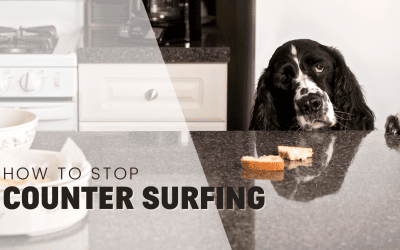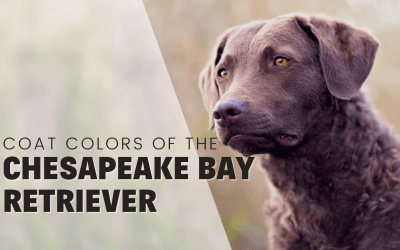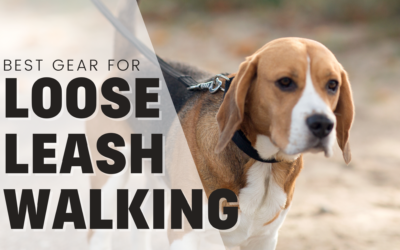Local walks can be a real snooze-fest – for both you and your dog – so why not change it up a little and introduce some parkour?
COVID-19 is a real killjoy for walks. I’m trying to be super strict and keep us as local as possible as often as possible so we’re using our local park a lot more than we normally would – but God, it’s boring!! It’s what, 10-15 acres of flat fields, interspersed with trees and a couple of duck ponds along with a kids playground, sports “Cage” (I don’t know what it’s called really but it has a 5 side court, basketball hoops, and even some fake cricket stumps!), and a skate park.
It’s where we normally do training in the morning (because it’s usually quiet enough) but right now it’s packed until dusk – and it really limits what Ind and I can do – which sucks!! So, I’ve read a lot about parkour, and had a little advice on how to use my park more effectively, and now… now it’s really coming into play. Indie actually enjoys it that much, that if we don’t do it, he starts offering the behaviour – which is awesome to see.
Through this piece, I’ll explain what this silly fandangled term is, go a little into what benefits it has, and a little of what Indie and I have been doing on our Parkour walks (I can’t even type that with a straight face – I promise it’s not as daft as it sounds), and how you can implement it. So that at the end? Maybe you’ll want to give it a go!

What is Parkour for dogs?
Well, you know the one they do for humans, where they jump between skyscrapers, and run up walls… it’s that but a lot less terrifying. It’s in the same vein as agility, but you don’t need any fancy equipment, it is not (as far as I’m aware) a competitive dog sport, but it’s definitely fun and totally suited to a suburban or city walk. You’ll be using benches, fences, bins, goal posts, hell, Indie and I even use a zip line! It’s basically looking at your park in a different way, a way that engages your dog. It turns the boring, into something way more interesting
How would my dog benefit?
Interesting one, this. It changes the ordinary work out into a much more interesting and intense for your dog. Especially if you keep it a little bit fluid and don’t do things too same-y. You’ll exercise different muscles, keep them thinking and make them engage more with their surroundings and possibly improve their listening skills, at the same time. It’s also a great bonding activity for you and your dog, and can be a fantastic confidence booster for fearful, timid or reactive dogs.
Where can I do this?
Pretty much anywhere. I like doing it ‘human parks’ – you know the ones I mean? The very pedestrian ones? I’ve been doing it in town-parks – like Baker Park in Frederick!
Who would this be suited to?
Parkour, I think, is especially for athletic or agile breeds (Think hunting, herding, terriers, collies, shepherds, weims, labs, goldies even cockapoos and labradoodles! etc). Be careful of jumping activities with puppies (though modified routines could be an idea) and with the elderly. But for a young, healthy energetic dog, this is perfect.
Need Help With Your Puppy?
It’s no secret that puppies are hard work.
But what if I could tell you I could give you a week by week guide as to how to solve that?
To stop problems before they happen?
When can I do this?
it’s perfect for those short walks, where you are in a bit of a hurry and you just need to get a bit more engagement from your dog than the regular sniff & a bimble. Or if it’s hot, but it’s late! I love doing it in the evening when the park is busy? Because it teaches Indie to keep focused on me rather than on the kid over there with a ball, or the family having a picnic over here.
Do Mum & Dad need to be physically able?
Ish? You may need to balance your dog, or help safely bring them to the floor in some instances. But don’t worry, you don’t need to run! I hate running, so, don’t worry about that!
How it works for Indie & I.

Honestly? I love it. It’s so daft, but it gets my dog out of his head, and helps him problem solve, and helps him learn what he’s physically capable of doing.
Indie is a crossbreed, he’s ¾’s German shepherd and ¼ Japanese Akita – he’s very strong, he’s fast, he’s agile, he’s smart. So keeping a step ahead of him takes work! So I’m constantly looking at things to do with him that can keep him busy and ‘away’ from the hum drum “Ugh, just going around this park again? Yuck” Mode – because when he goes into that? You can see him be looking for trouble. So, if I keep him stimulated and keep him learning, we get slow and steady improvement. So, that’s why we love to do it.
We’ll go into the local park, and I will say, it’s a great park for it. We have benches, zip lines, kids parks, skate parks, trees, goal posts, fences, fallen trees – upright trees too! Sign posts, Life Buoys by the lake, picnic benches and even bins… yep. A whole host of people stuff – but it’s also a whole host of potential obstacles for Parkour!
The following is a breakdown of some of the ways I challenge Indie in our local park to use his natural abilities.

Over & H’up! Challenges
Over is usually jumping over a fallen trees or benches, h’up-ing (by which I mean jump up onto said object) onto high tree stumps, fallen trees and picnic benches. For these I will suggest you start low – I mean if your dog was anything like mine before these exercises, he was rarely asked to jump higher than the sofa. So, don’t decide to ask your dog to leap a 4ft fence before you know he can, that’s how your puppy winds up at the vets.
You and your dog probably don’t have a great comfort in exactly what your dog is capable of doing. For example, one task I will often work Indie up to is a tree stump (not sure it qualifies as that as it’s about 4ft at his peak!) which is unevenly cut and quite high, so it really makes him think – and I have had to catch him a couple of times when he does his … not-quite-there jumps. So, please be cautious and build up.
Paws-Up! Challenges
This one is kind of a basic for us, it’s not ‘technically’ parkour? But it’s fun! So, I’ll ask Indie to “Paws Up!” and he’ll put his two front paws on the object that I’m indicating to – I like to try and pick unstable items? So, my favourites for him at the moment (on a difficulty basis) is the Life Buoy at the side of the ponds, and the seat of the Zip Line (which is suspended on a single chain, covered in rubber) as they’re wonderfully uneven and challenge him to balance his weight a little more. I also like to pick things that make different noises (metal railings, bins, benches, plastic, metal signs and even brick walls!).
‘Round-it! Challenges
These are working off Indie’s understanding of “Spin”, so he’ll spin or round an object like a tree, goal post, bollard or lamp post! Simple stuff and makes a nice alternative to Paws Up to keep our parkour fun different and challenging.
Balance Challenges
Narrow objects can present a challenge, this could be an uneven bench seat, along a fallen tree, a planter, a raised wall. It’s about narrowing where your dog can tread and to ask your dog to concentrate on where they are putting their paws, to be more precise and focus a little more on the “regular” activity.
Distance fillers!
You can do all sorts of things to keep them entertained in between your obstacles! Touch games, spin, sit/stay/come routines, leg weaves… your imagination is your only limitation here.
There’s also Through and Under challenges, though Indie and I don’t do these often as he’s a big boy, where you can ask them to move through an object (like a climbing frame) or under a bench!
I also avoid doing certain things with Indie, as they’re less fair on a larger dog like him, so feel free to tailor this to your dog, these are just suggestions, you and your dog will figure out what’s the most fun, and you’re going to end up looking at a regular day to day object like “Indie can totally jump that. We’ll do that next time.” Which is when it becomes really fun! I’ve seen videos of more delicate dogs balancing on tops of bollards – which – bless his little heart – Indie will never be able to do. So, as I said, do totally tailor these things to your dog, and you’ll really start enjoying it.

What fun!!
All in all? I love this and I think there’s a number of you out there who have dogs that will love it too. It’s a more interesting version of your basic town or pedestrian-park walk. It can expend more energy, use different muscles, and ask your dog to engage it’s brain in a new way – and give both of you more enjoyment. So what’s to lose?
If you want to try it? Well, the world is your playground – literally. Go do! Just remember, start slow, be gentle, and always be ready to help them out if they take something wrong. Or, if you’re not confident – why not book in a lesson with a pro? Well, once we’re out of lockdown of course!!
Since moving to the US? This is something I now do with rocks, tree stump
Want to share what you do with your dog? Or how this has changed things for you? Why not get in touch via social media! I’d love to hear from you!
Further Reading: Dogs do parkour: Canine agility sport proving a hit in the UK – Rachel Spencer
If you need help challenging your puppy? Then check out my weekly Pupdates! Solving your problems before they happen.

Author, Ali Smith
Ali Smith is a professional, qualified, and multi-award winning trainer is the founder of rebarkable. She has always believed animals deserve kindness and champions force free methods. Believing that dog guardians will all choose the kindest options if proper information is provided, she aims to help all dog guardians who need it and make dog training as accessible as possible
Ali lives win Maryland, US with her husband and her three dogs.






0 Comments